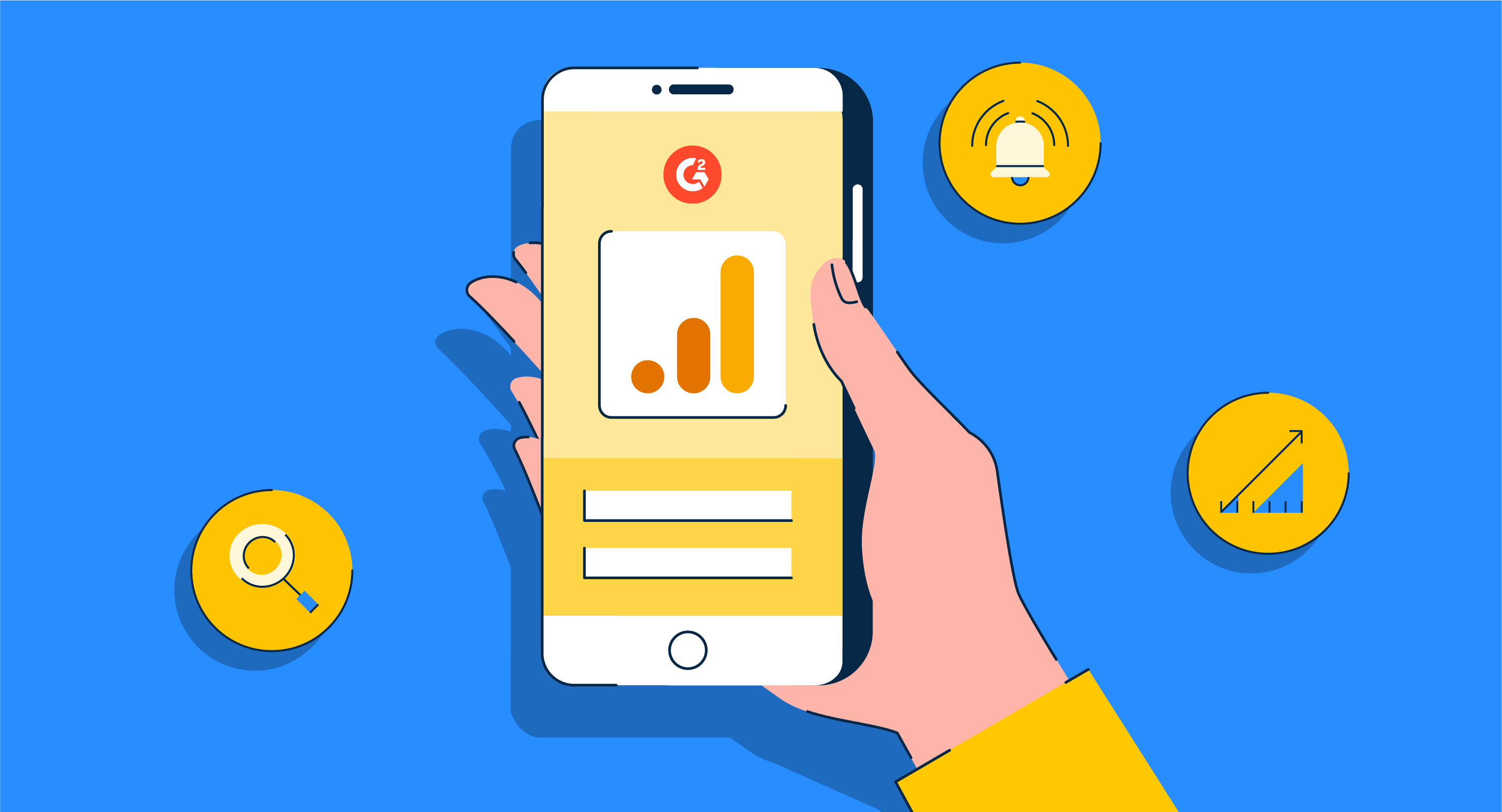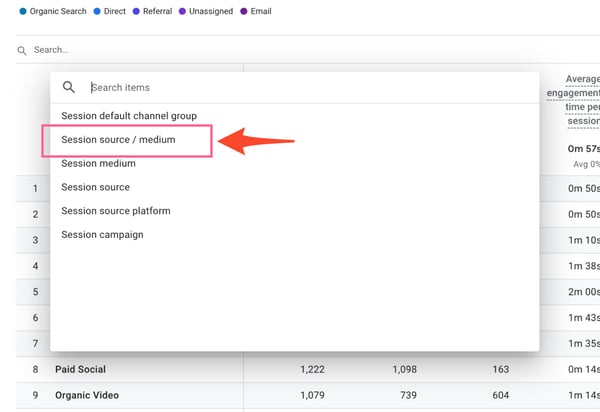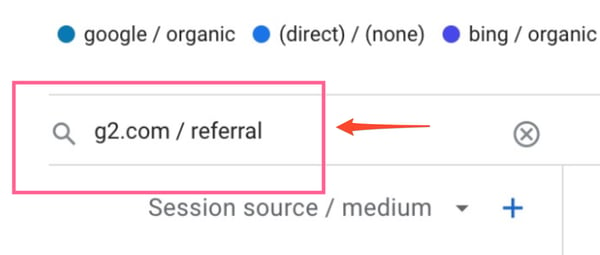August 8, 2023
 by Stephen Hoops / August 8, 2023
by Stephen Hoops / August 8, 2023

Indecisiveness can be a killer. To thrive, you and your business must have the information required to be confident in your decisions.
Knowing which digital channels are the most effective for generating demand and building pipeline is core to a well-oiled go-to-market strategy for software vendors. Some prove to be more consistent than others, but in the end, every channel can potentially pull in relevant buyers.
Sourcing a high volume of web traffic isn’t enough. You need to get relevant buyers that want to explore your solutions and absorb your content.
Qualified buyers are your priority, and the best way to understand if you’re sourcing the right traffic is by observing engagement metrics such as conversion and bounce rates, time on site, and scroll depth, to name a few. Drilling down how visitors behave across different digital channels is crucial to inform your overall acquisition strategy.
One of the most underrated channels software marketing teams overlook is referral traffic. When coming from the right partner sites, visitors referred to yours arrive with greater context, intent, and behavior metrics than most other sources.
In this article, we’ll break down where you can find your G2 referral traffic in Google Analytics and why this traffic matters.
Referral traffic refers to the online visitors who arrive at your website through external links placed on external sites. When people click a link on one site, and their browser routes them to an external site, this is considered a referral visit.
Visitors come to your site from all over the web. In the context of common tools like Google Analytics and Adobe Analytics, you can see where these visitors started their journey prior. Identifying how these folks came to your site is crucial to understanding where your efforts are paying off and if you’re getting a positive return across multiple acquisition strategies.
While some visitors come to your site by plugging your domain name into their browser, many others get there via external sources. Excluding visitors coming from social media, organic search, or paid advertising, here are a few examples of a referral visit.
Any time someone researching your profile on G2.com has the option to click through to your website. Finding this data in Google Analytics GA4 is simple and should become a routine part of your total web traffic analysis.



You know where to find G2 referral traffic data in GA4. The next piece worth learning about is how to put it to good use.
You can utilize the G2 Content Marketing Subscription to license content like badges, Grid Reports, and others to explore design and messaging upgrades to your website. If you decide to experiment with A/B testing to find areas to improve conversion rates, consider setting up individual tests with the following:
In many mature marketing programs, referral traffic doesn’t yield the same volume of visitors quite as much as organic search or paid advertising. If you’re questioning why it’s worth tracking this traffic source, consider the old cliche: quality over quantity.
As marketing budgets continue to shrink and deal cycles only get longer, you need to execute your acquisition strategy with high efficiency. Building valuable pipeline is the ultimate goal, and how visitors come to your site can shed light on what motions are working.
Modern web analytics software is pretty good at determining demographic information about visitors to your site. Another major reason we break down traffic data by channel rather than in aggregate is that where visitors start their journey is super relevant.
For example, if a visitor comes to a site using a non-branded search term, there’s a strong likelihood that they’re early on in their buying journey. If they search for “best ERP software,” they are still discovering which vendors they should consider.
Consider that organic and paid search visitors indicate strongly that they’re looking for a solution like yours. But that’s all you can assume about these visitors without engaging them or moving them down the funnel.
There’s only so much you can do to guarantee proper attribution for your web visitors. While some visitors click through to your site from your profile on G2, this doesn’t account for visitors that discover you on G2. For every link-click referral that is trackable via analytics software, there are potentially dozens of untrackable visitors coming to your homepage as direct traffic rather than clicking the link.
The good news is that you can analyze your G2 referral traffic to understand how you can potentially optimize your presence on G2.com to drive more referrals. Consider that you also have a chance to positively influence your product's reputation with a larger audience than you might first realize.
Get even more valuable data on your web traffic from G2. Learn how implementing Track Your Prospects on your site can generate unique insights into buyers researching your brand.
Not all referral traffic is equal, as some sources align better with your acquisition goals than others. For example, external link clicks from a guest post your company publishes about a high-level concept might be good for top-of-funnel awareness, but it’s difficult to tell whether these visits signify if they’re in-market for what you offer.
No one comes to our site to have fun (bummer). G2 is the world’s largest marketplace for B2B software, meaning they’re here to research software for their unique needs.
Visitors browsing your G2 Profile gain an initial familiarity with your brand while also reading verified reviews from real folks. We know that 84% of software buyers research products online, giving you a substantial leg up in leaving a meaningful impression on these visitors.
Not only does their activity on G2 indicate they’re researching software, but there’s also a significant likelihood that they’re in-market and actively looking for solutions. Because of this, visitors coming to your site from G2 are more qualified and more educated about your brand than other sources.
Let’s take a look at some data reported by several customers to provide some context about just how impactful G2 referral traffic can be:
Note: Customers are purposely kept anonymous to comply with third-party data-sharing practices.
There’s no doubt about the capacity channels like organic and paid search can have for generating significant traffic amounts. All that matters is how traffic sources contribute to your branding, revenue, and pipeline goals.
Your sales and marketing teams want to target in-market buyers. Ultimately, it makes sense to prioritize channels that send a consistent stream of folks actively looking for your products. As one part of a robust strategy, referral visits from G2 are an excellent source of qualified buyers that fit your ICP.
We’ve covered a lot of ground in this article, from breaking down the differences between typical traffic sources to why it’s worth evaluating referral traffic from G2 referrals. Here’s a quick look at some important takeaways.
Looking to target your ideal buyers with even greater precision? Learn more about how G2 Buyer Intent can be a game changer for identifying and marketing to in-market prospects.
Stephen Hoops is a former Sr. Content Marketing Specialist at G2. He focused on creating content that helps tech industry sales professionals and B2B SaaS marketers find success with G2 products such as Buyer Intent, Review Generation, and more. After receiving his B.A. in Journalism from West Virginia University in 2013, he has helped countless B2B brands reach new highs through content creation and SEO. When not nerding out about the artistry behind well-written copy, Stephen can be found info-dumping about homemade cocktails, Italian cuisine, and why vinyl is the superior physical medium for music.
In today's competitive landscape, word-of-mouth remains one of the most powerful marketing...
 by Kirsty Sharman
by Kirsty Sharman
Referral marketing is an amazingly effective tool when employed correctly.
 by Derick Okech
by Derick Okech
Partnerships are no longer just a growth lever — they’re a core business strategy.
 by Sean Blanda
by Sean Blanda
In today's competitive landscape, word-of-mouth remains one of the most powerful marketing...
 by Kirsty Sharman
by Kirsty Sharman
Referral marketing is an amazingly effective tool when employed correctly.
 by Derick Okech
by Derick Okech


